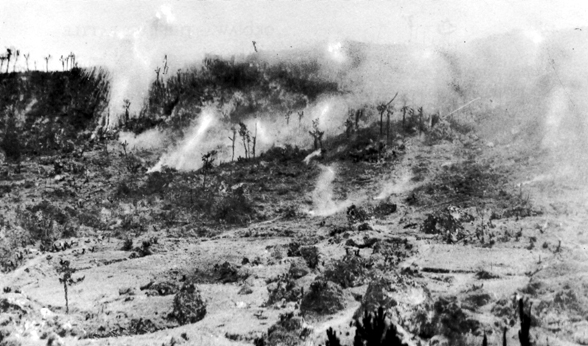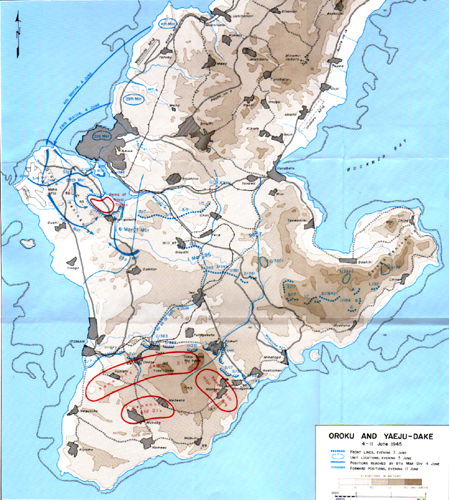On Okinawa, in the north heavy fighting continues on the Oroku peninsula.
In the south, the US 24th Corps prepares to attack Mount Yaeju.
On Okinawa, the Japanese forces defending the Oroku peninsula are cut off and surrounded by forces of the US 6th Marine Division.
The US 1st Marine Division advance southward to Kunishi Ridge, one of the last Japanese strong points.
On Okinawa, fighting continues on the Oroku Peninsula, where the forces of the US 6th Marine Division have reduced the Japanese pocket to about 2000 square yards. Heavy Japanese losses are recorded in nighttime counterattacks.
Meanwhile, on the south of the island, the US 1st Marine Division suffers heavy losses in the successful capture of a hill west of the town of Yuza.
The US 24th Corps forces, to the left, launches a major offensive against the last Japanese defensive line, the Yaeju-Dake Line. Japanese resistance is evidently weakening.

YAEJU-DAKE was brought under American artillery fire shortly before the infantry attempted its first advance to the escarpment. Burst at upper left is white phosphorus.


